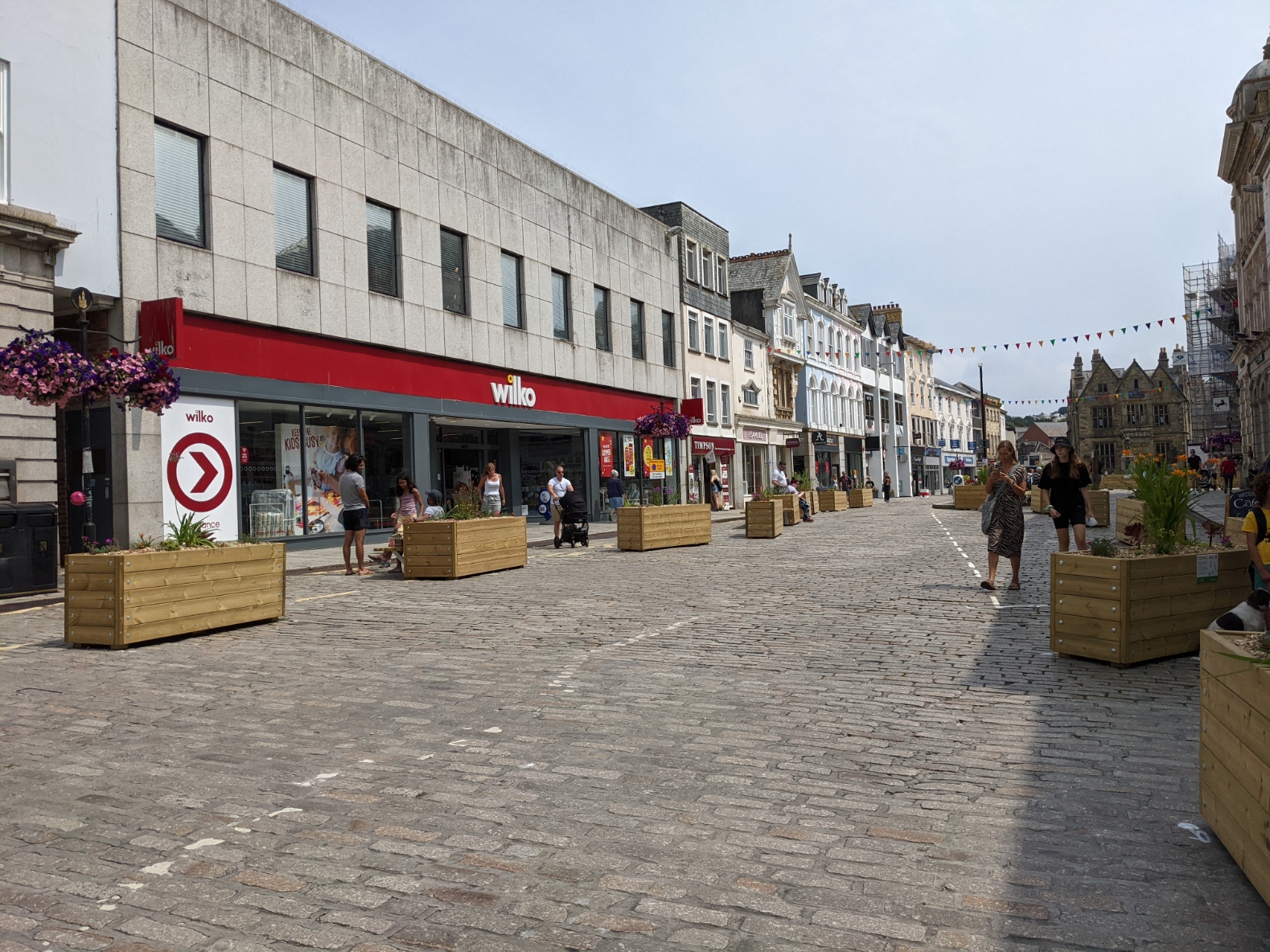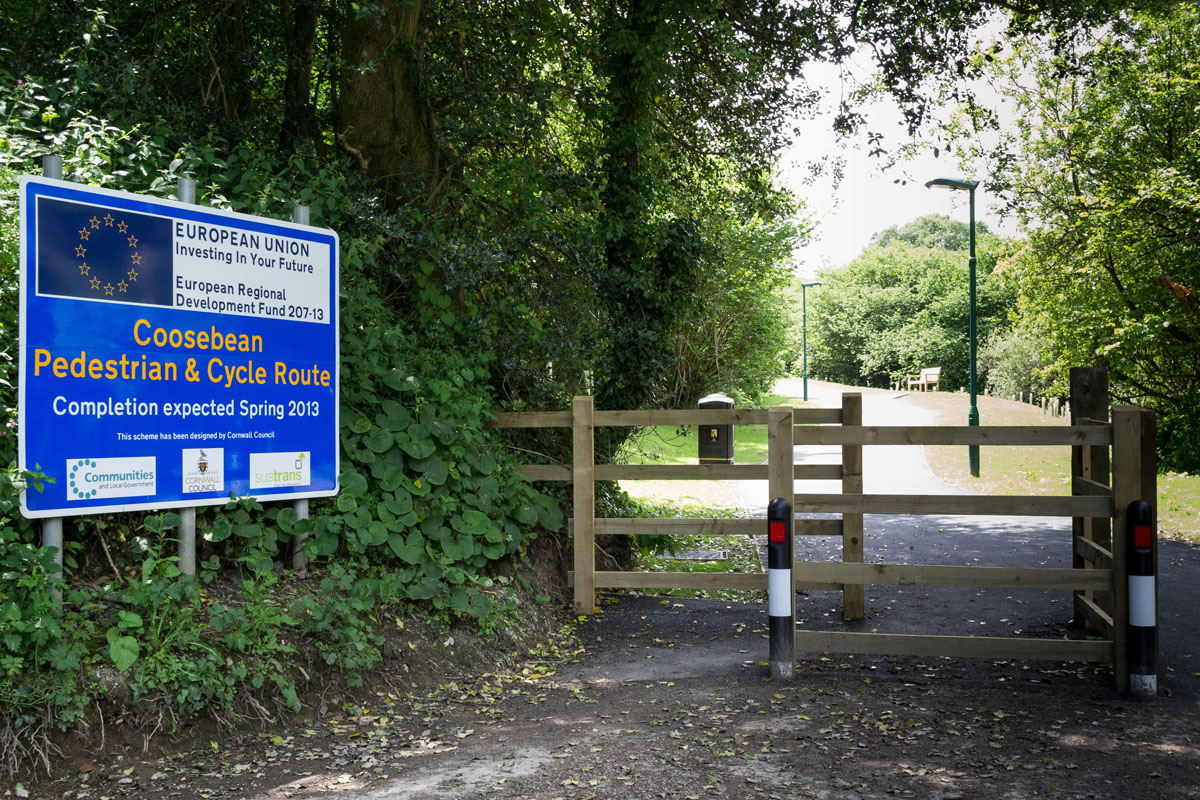John Crowther Remembered
‘I thought I was the finest architect since Corbusier’
In the 1930s John Henry Crowther was an architect working for Yorkshire County Council. He lived in a Council House at Dewsbury with his wife and young son, John. The County Treasurer was Mr Herbert Hepworth. His daughter, Barbara, was older than John. Little did either know that, many years later, their two children would meet and become firm friends, mutual supporters and incisive pioneers of modernity. Each in their own way would make their contribution to changing the world.
In 1939 John Henry accepted a post in the architects’ department at Cornwall County Council. So, the Crowthers embarked upon Cornish life from 4 Farley Terrace, before it was commandeered by the Army and they moved to a cottage at Malpas. From here young John attended Truro School. He developed a quick pair of hands and a sense of the three-dimensional from model making, which was his passion.
Truro School, sadly, was unable to do much for him. On his own admission, John was not scholastically bright and he struggled. Cross Country running – ‘I was on my own doing that!’ he told me – proved an exception. During the War John illicitly joined the Royal Observer Corps. His knowledge of model aircraft, his keen eye and love of action found him stationed at Carland Cross – ‘The highest point, where you could see German fighters skimming the valleys!’ – until Dr Magson, the Headmaster, found out and he was withdrawn. John later became a Governor of Truro School.
When he recounted these things during our conversations he looked across his neatly cluttered office and, with a wry twinkle in his eye, the innate Yorkshireman in John observed: ‘I got my own back later when I built most of the senior masters’ new houses. We got on alright then!’
At the end of the War, after a tedious year cramming engineering, the young John was accepted by Cardiff University and he embarked on his course as an architect. At this point the Crowther-Craft lifted off – he excelled, winning Design Awards in four of his five years. In vacations he came back to Truro and designed Festival Gardens (in St Clement Street). John the Younger had found that his father’s profession was his vocation.
Leaving Cardiff, John Crowther was brash, ambitious, talented, charming and forceful. John Taylor joined him to form Taylor & Crowther – with £100 borrowed from the Bank the dynamic of modernity landed in 66 Lemon Street.
On the first day there was a knock at the door. In came Alfred Cornelius, the Truro architect who had practised throughout the century, having taken over the Practice of Sylvanus Trevail after his suicide. Crowther was honoured by the old man’s visit. Cornelius imparted one piece of advice from his vast experience. ‘If you receive a letter, put it on a spike. If you get a second, put it on another spike. If you get a third, put it on a third spike. You’ll never get another!’
John loved this story. He quickly developed an eye for eccentricity and humour which privately entertained him. He admired many people for their characters, their skills and for their achievements, and he was open and charming in his admiration, a talent which enabled him to build a wide and generous clientele – what they saw was what they got!
What they got was a dedication to excellent design, to probing traditions and testing modernity in making the future, an impatience tempered with a meticulous attention to detail, and an approach to problems which was positive – there was no solution that could not be found, no obstacle was insurmountable.
Within four years John was on National Service in the Army, a second lieutenant in Harwich. He was 26 years old. John Taylor was left to run the business while Crowther joined the Royal Engineers – ‘It was a bit of a shock!’ Billeted with 18 Glaswegians, none of whom could read or write, he acted as scribe when necessary. He recalled the Drill Sergeant coming one morning to ask why one of the Glaswegians had not had a gun on parade. The reply was that he had sold it the night before! John was discovering a totally different world! ‘I survived!’ he told me.
Returning to Truro in 1955 he found the business in good hands and quickly resumed his career. He told me that he thought John Taylor ‘A brilliant architect in many, many ways’. Suffice it to say that each has professed the greatest respect and affection for the other and the partnership, born almost out of the blue, in many ways, has changed the face of Truro and many parts of Cornwall, and shaped both men, and their enduring friendship has lasted far beyond business associations.
In the late 1950s Taylor & Crowther moved offices to the top floor of the new Martin’s Bank in Boscawen Street. John designed the building and won the first Civic Trust Award for Cornwall. Many people, including John Taylor, believe it to be his best job. It introduced modernity to the otherwise Victorian and Georgian town. Today, the building sits well as a representative of its period between the mock renaissance City Hall and the narrow, tall Dutch-gabled Boggia building, with Crowther’s more startling, white and windowless (former) W H Smiths replacing the London Hotel at the corner of Lower Lemon Street – I find the group genuinely satisfying, a juxtaposition of tradition and modernity which creates a new unity, proportionate but assertive, discreet yet distinctive.
Always anxious that his work was good, his cousin, Mary Utton, recalls driving at night to view new work, to see how it sat in its surroundings, what impression it made.
Why has John Crowther made such a mark?
He chose to be a big fish in a small pond. He learned quickly that he was not to be the next Corbusier. But, he was an excellent architect, a brilliant maker of deals, a talented designer, a tenacious businessman and a leader – he was obdurate in his Yorkshire self, and courteously modest in his Cornish self; he was a socialist annoyed by the Methodism of Truro School, but pragmatic enough to take commissions from both school and masters. He knew his strengths and his limitations and his honesty made him successful. John Crowther was forthright, not straightforward.
Perhaps the blend of Yorkshire and Cornwall made him a man of contradictions and enigmas – a convinced modernist who helped form Truro Civic Society to temper the worst excesses of the modernisers’ zeal. Perhaps he saw that, by setting up a dynamic between traditionalists and modernisers, the town could find a successful way forward. I think this was his instinct – practical solutions to achieve a sophisticated strategy.
The deal with Martin’s Bank was a breakthrough. John was insistent that he wanted to undertake projects for clients who were going to build what he designed. John Stengelhofen pointed out in a recent conversation that John always built to a very high standard. ‘You rarely, if ever, see scaffolding on a Crowther building!’ Such principles were the foundation of his reputation. His client list grew. Between 1952 and 1993 Crowther’s practises undertook 4500 recorded jobs. As the Practise grew many talented architects passed through – most benefitting from the delegation, the leadership and the tenacity of John Crowther; many leaving to set up in Practice; some to achieve distinction – all to remember with affection and gratitude their time with Taylor & Crowther and, latterly, John Crowther & Associates.
In 1963 Taylor and Crowther built the distinctive and widely admired small offices complex at Charles Street. Later, after his retirement, I tried to get the offices listed to stop their demolition. Another trait in the Crowther character manifested itself. He would not agree to such a thing – he was neither sentimental nor protective of his creations. Buildings go up, and buildings come down – we must look forward. It is to be hoped that, with his death, we look to ensure that the best examples of this architectural endeavour survive and are valued. It will be an uphill struggle because the architecture of his period, the great challenge of the post-war, is regarded by pastiche-drugged planning committees as ugly, inhuman, inelegant and dysfunctional. John argued vehemently in his later years for the reintroduction of architects into planning departments – a worthy campaign which should be his legacy.
In 1967, visiting Denmark on business, John met and married Gunni Holst Jorgensen, a bi-lingual language secretary. He courted her by flying to Denmark once a month for a year and then proposing. They married in Frederiksberg and, after a one day honeymoon, they flew back to return to the office on Monday morning. To Gunni’s bemusement, on the Tuesday the Mayor of Truro, Alderman Kemp, called to welcome her on behalf of the citizens of Truro. A year later the couple moved to ‘Bellevue’ on Restronguet Point. A year after that, their son, John Bjorn Crowther, was born.
John Crowther loved with an intensity which was evident at all times, but, I suspect, rarely spoken. Perhaps he found it difficult, as a Yorkshire man, to express his love, but it spoke through everything he did and said – instinctively.
In 1976 John was invited to become a Fellow of the Royal Society of Artists. This was in recognition of his work at Falmouth College of Art and Design where he was a Governor. He was also recognised for his support for the daughter of his father’s old friend from Yorkshire County Council, Barbara Hepworth. Through her John and Gunni met many of the leading Cornish artists of the post-war period, and he was recognised by them as a fellow traveller, a modernist seeking influence from the timelessness and character of Cornwall to craft a new and distinct accommodation between modernity and tradition, the intellect and passion, the functional and the aesthetic.
He was a good friend to Hepworth, even to the extent of sneaking much-sought-after if illegal whisky to her during an illness in Treliske Hospital. She trusted him. He offered discreet business advice and friendship during critical moments. With her he helped to form the influential Penwith Society of Artists. In 1988, John’s work and career were recognised by the award of the OBE – for professional services to architecture.
In more recent times, as well as developing an exemplary website for the Friends of Restronguet Creek, John supported the Civic Society and much of Truro in campaigning to prevent Waitrose from developing an out-of-town store beyond Newquay Road. He contributed wisdom, weight and intense enthusiasm to the campaign. His voice was authoritative, clear and expert. He also bolstered my spirits with encouragement, new ideas and cryptic early-morning e-mails!
Here is a man acclaimed by his profession, a strong Socialist, not a producer of world shattering buildings but an excellent architect working in a place for which he had an endless passion and to which he sought to contribute a modern expression to tone with and balance the structures of all eras, from the Stone Age to the Edwardian. John involved himself in the life of Truro, through the Chamber of Commerce, the Civic Society, through RIBA and through his constant networking. He was influential in shaping the modern town centre, and in understanding how it worked. He was a ruthless, kind, passionate, logical, intellectual and compassionate man. I believe that he conducted an inner life of great complexity, maintaining a calm, purposeful and courteous appearance whilst merry laughter, loud anger, melancholy and joy churned away inside. The elegance of his mind, his commitment to excellent design and his dedication to the principles of honour, courtesy, efficiency and quietness won him many admirers and much respect. Above all, John was a man of his word – it was truly his bond.
John Crowther has passed across the Earth. He has loved, found fortune and made fine structures to grace his age. He never abandoned his Yorkshire roots, but he found within himself a Cornishman of profound intensity and creativity – I found him to be a staunch, tireless and thoughtful vice-Chairman as we sought to reawaken the Truro Civic Society. He has taught me much about Truro, Cornwall and the World he so assiduously explored, about bravery and principle, about loyalty and argument, about my town and about design, planning and architecture – above all he has taught me that, from considered love for people, places, art and nature grows fine human beings who, in their practice of life, experience and hand on the meaning of humanity. Go well John Crowther!






Where do you live. The Goss Moor bypass has made a real dceferfnie. We need local jobs and a more sustainable economy here, and the Falmouth port development would make that possible. Protecting frontline services and investment in education vital for people here too.
My grandfather Alec Wells worked for crowther before taking over Cornelius practice in 1964, the talented architect designed in Cornwall for over 50 years before passing away this week